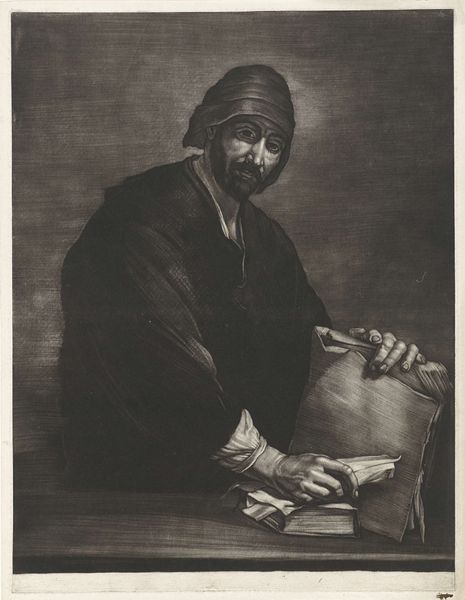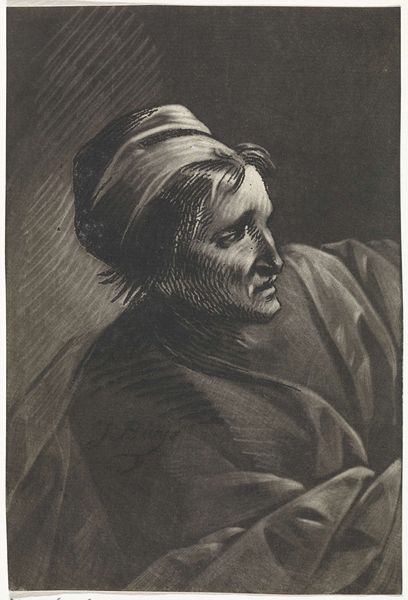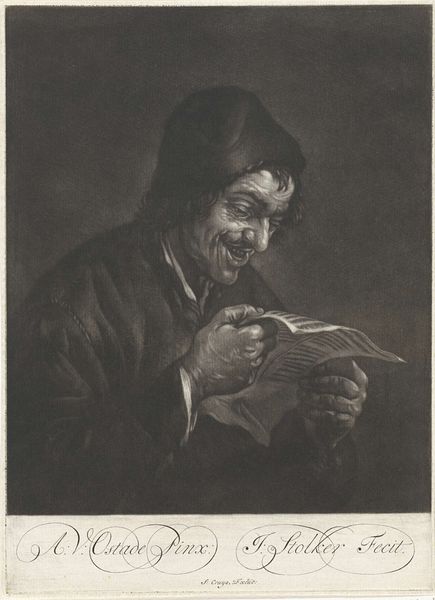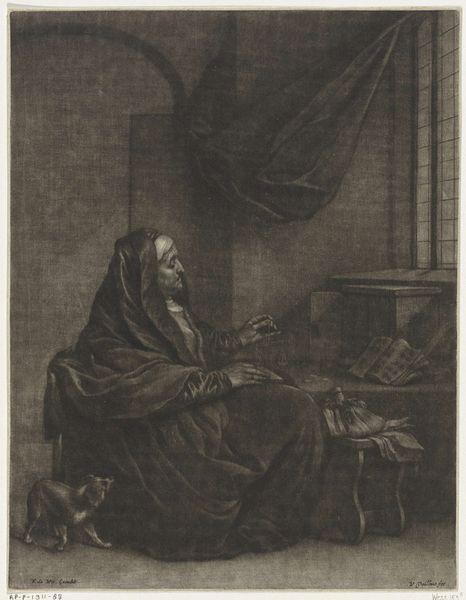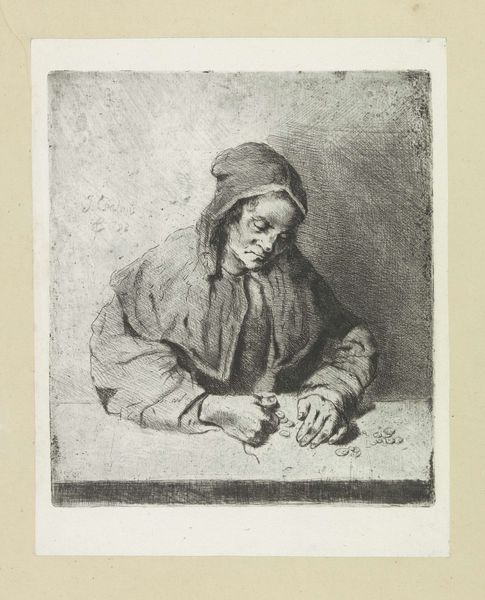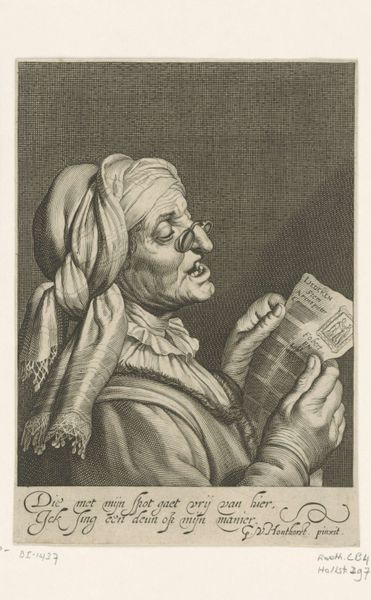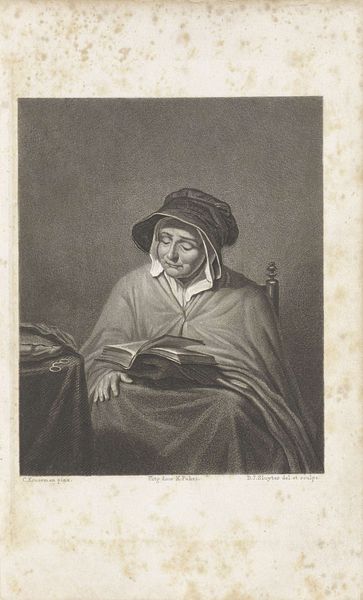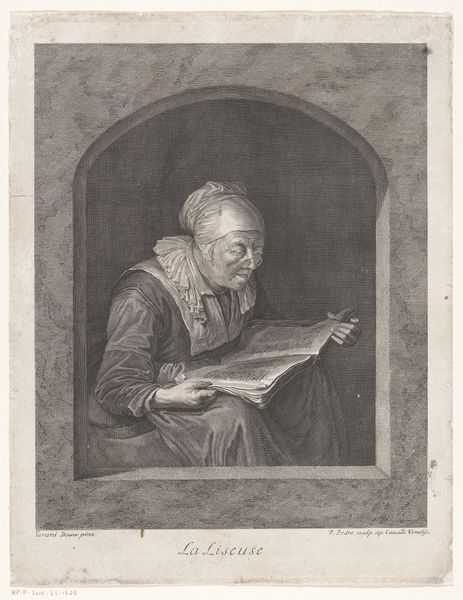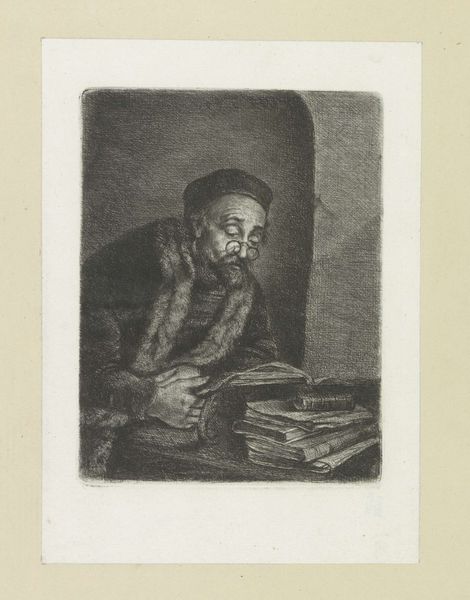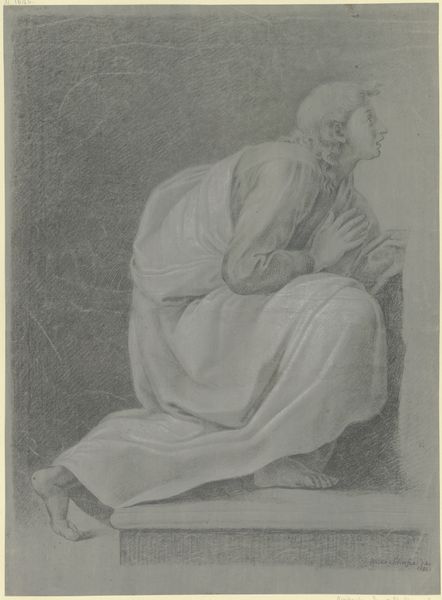
#
pencil drawn
#
toned paper
#
light pencil work
#
shading to add clarity
#
pencil sketch
#
charcoal drawing
#
charcoal art
#
pencil drawing
#
portrait drawing
#
pencil work
Dimensions: height 166 mm, width 115 mm
Copyright: Rijks Museum: Open Domain
Curator: This is "Lezende vrouw" by Aert Schouman, likely created sometime between 1720 and 1792. The artwork, currently residing here at the Rijksmuseum, presents us with a quiet scene rendered in pencil on toned paper. What strikes you initially? Editor: There’s an undeniable weight in this image, a sombre intensity. The chiaroscuro effect immediately draws the eye to the subject's face and hands, but then you're plunged into this enveloping darkness. It feels like witnessing a very private, perhaps even a melancholy, moment. Curator: Precisely. Schouman’s delicate pencil work uses shading to create this mood, which reminds us that older women faced unique societal challenges in that era—diminished social status, economic insecurity, reliance on family, their identity. Editor: Her glasses! They really stand out. It emphasizes intellect, literacy but, perhaps, also a certain frailty or reliance on visual aids in aging. Are they a symbol of something more than just sight correction? Curator: Well, eyewear gained traction as a symbol of learnedness during this period. Beyond practical use, eyeglasses and books in art reinforced access to knowledge, a privileged pursuit limited by gender. A woman engaged with texts signaled a move against traditional, restrictive gender roles. Editor: Absolutely, a powerful statement on female education. Then, there's the covering—the veil, headscarf. I am immediately considering what messages of privacy, or, perhaps, religion the artist conveys by having her covered in this manner? What’s the relationship between inner wisdom and outward presentation? Curator: Contextualizing veiling is critical, recognizing the myriad cultural, religious, and socioeconomic associations of such practices during the Dutch Golden Age, alongside later colonial expansions which used similar symbols to justify cultural hegemony. Was it cultural or perhaps related to aging within society at this time? Editor: It provokes a much broader contemplation on how artists then—and how we still—visualize knowledge, and how the human gaze processes and understands those visuals. Curator: Absolutely. The piece makes visible not only a woman reading, but also larger questions of literacy, identity, and agency during this time. Editor: The nuances of shadows, the subject's face…I see the work asking vital questions on seeing itself.
Comments
No comments
Be the first to comment and join the conversation on the ultimate creative platform.

